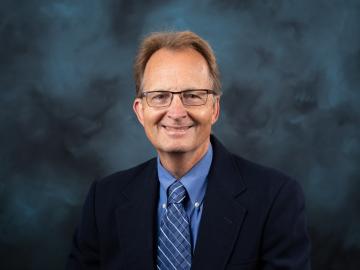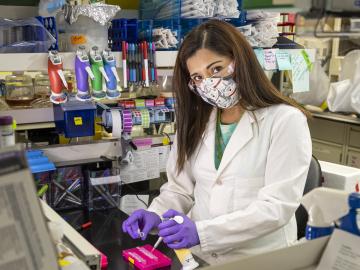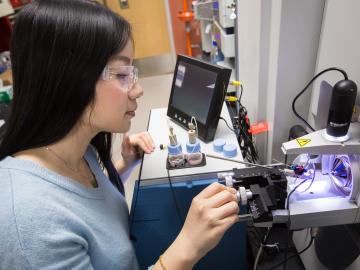
Filter News
Area of Research
- (-) Biology and Environment (90)
- (-) Materials (13)
- Advanced Manufacturing (1)
- Biological Systems (2)
- Computational Biology (2)
- Energy Science (34)
- Fusion and Fission (2)
- Materials for Computing (1)
- National Security (6)
- Neutron Science (14)
- Nuclear Science and Technology (1)
- Quantum information Science (1)
- Supercomputing (17)
News Topics
- (-) Bioenergy (52)
- (-) Biology (74)
- 3-D Printing/Advanced Manufacturing (27)
- Advanced Reactors (4)
- Artificial Intelligence (15)
- Big Data (11)
- Biomedical (20)
- Biotechnology (14)
- Buildings (5)
- Chemical Sciences (36)
- Clean Water (14)
- Composites (11)
- Computer Science (34)
- Coronavirus (14)
- Critical Materials (13)
- Cybersecurity (5)
- Energy Storage (37)
- Environment (102)
- Exascale Computing (6)
- Frontier (6)
- Fusion (8)
- Grid (8)
- High-Performance Computing (24)
- Hydropower (8)
- Irradiation (1)
- Isotopes (13)
- ITER (1)
- Machine Learning (12)
- Materials (78)
- Materials Science (82)
- Mathematics (4)
- Mercury (7)
- Microscopy (34)
- Molten Salt (3)
- Nanotechnology (42)
- National Security (5)
- Neutron Science (36)
- Nuclear Energy (16)
- Partnerships (13)
- Physics (29)
- Polymers (18)
- Quantum Computing (3)
- Quantum Science (11)
- Security (3)
- Simulation (16)
- Space Exploration (2)
- Summit (11)
- Transportation (15)
Media Contacts

The Accelerating Therapeutics for Opportunities in Medicine , or ATOM, consortium today announced the U.S. Department of Energy’s Oak Ridge, Argonne and Brookhaven national laboratories are joining the consortium to further develop ATOM’s artificial intelligence, or AI-driven, drug discovery platform.

Stan Wullschleger has been selected as the associate laboratory director for the Biological and Environmental Systems Science Directorate, or BESSD, at ORNL.

Cory Stuart of ORNL applies his expertise as a systems engineer to ensure the secure and timely transfer of millions of measurements of Earth’s atmosphere, fueling science around the world.
Oak Ridge National Laboratory and collaborators have discovered that signaling molecules known to trigger symbiosis between plants and soil bacteria are also used by almost all fungi as chemical signals to communicate with each other.


From soda bottles to car bumpers to piping, electronics, and packaging, plastics have become a ubiquitous part of our lives.

The annual Director's Awards recognized four individuals and teams including awards for leadership in quantum simulation development and application on high-performance computing platforms, and revolutionary advancements in the area of microbial

Popular wisdom holds tall, fast-growing trees are best for biomass, but new research by two U.S. Department of Energy national laboratories reveals that is only part of the equation.

Systems biologist Paul Abraham uses his fascination with proteins, the molecular machines of nature, to explore new ways to engineer more productive ecosystems and hardier bioenergy crops.

Scientists at Oak Ridge National Laboratory and Ohio State University discovered a new microbial pathway that produces ethylene, providing a potential avenue for biomanufacturing a common component of plastics, adhesives, coolants and other


